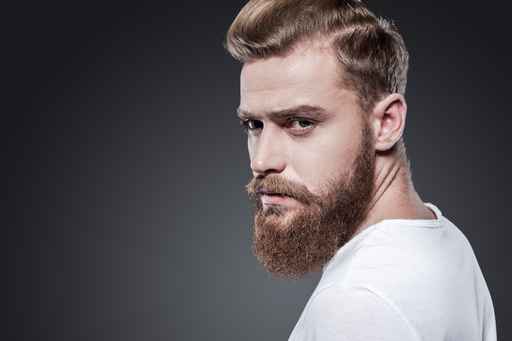Facial Hair Transplant
Facial hair transplantation is a procedure which restores hair to areas where facial hair growth is thin or missing. While this procedure is most commonly performed on the goatee and mustache areas, it can also be performed on beards, sideburns and cheeks. Facial hair transplants can also be used to conceal acne scars and other types of scars.

Loss of facial hair may occur for a number of reasons. It can be the result of genetics, laser hair removal, electrolysis, surgery, burns or injury. Goals for this procedure can vary from a minor filling in or thin coverage of a limited area, to the full restoration of a thick, full goatee or beard. The procedure can be performed on areas where there is no hair or on areas where hair growth is thin and more fullness is desired.
The number of grafts required can vary but averages are as follows: 350-500 grafts for the mustache, 600-700 grafts for a full goatee, 200-250 grafts for each sideburn, and 300-700 grafts for a cheek beard. While not very common, some patients may require a second procedure to transplant additional grafts if they desire a very thick density.
Just as with a hair transplant to the head, the donor hairs for a facial hair transplant come from the back or sides of the scalp. Which site is used typically depends on which offers the closest match to the facial hair; sometimes it’s the back of the scalp while other times it’s the side of the scalp. Once transplanted, the hairs are permanent and typically grow just like facial hair with similar texture and other characteristics. Furthermore, the transplanted hair can be shaved just as you would other facial hair.
FUE & HAIR often uses grafts containing one and sometimes two hairs in order to achieve the most natural appearance. Our medical team is also careful to place the grafts at the exact correct angle and direction and, in the case of gray hair, our medical team will even go so far as to aesthetically distribute any existing gray hairs into the restored areas. To minimize scarring, our medical team use all-microscopically dissected grafts that can be placed in the smallest possible incisions. For patients concerned about future hair loss of the scalp, it’s important to note that hairs transplanted to the face are no longer available for hair transplantation. Thus, if future hair restoration is desired to address male pattern hair loss of the scalp, the facial hair transplant patient will have fewer hairs available in the donor area to work with.
Our medical team is truly a leader in the field of hair restoration and facial hair transplantation in particular. Many surgeons have little to no experience with facial hair transplantation but our medical team performs an average of three to four of these procedures each week. In fact, many patients travel to him from across the country and the world due to his reputation and unique experience.
Donor Hairs for Facial Transplantation
The donor hairs come from the scalp, which typically grow like normal facial hair in their texture and other characteristics, and can be shaved like other facial hair. Sometimes the closest match is with hairs from the side of the scalp, other times with hair from the back of the scalp. Once transplanted, the hairs are permanent. To provide a natural appearance, the hairs are transplanted as one and sometimes two hair grafts, depending on how the natural facial hair grows. Other steps taken to assure naturalness include the careful placement of the grafts at the exact correct angle and direction, the use of all-microscopically dissected grafts that can be placed in the smallest possible incisions so as to minimize scarring, and even the aesthetic distribution of any existing gray hairs into the restored areas. Note that these hairs transplanted into the face are no longer available for transplanting into the scalp if the patient desires to undergo restoration of any male pattern hair loss that may develop in the future, thus meaning that there will be fewer hairs available for this area.
Procedure & Recovery
The procedure is usually performed under local anesthesia with an oral sedative, depending on the patient’s choice. Lasting 2 to 5 hours, it is essentially painless, as is the recovery period. For the first 5 days after the procedure, tiny crusts are around each transplanted hair, and the transplanted area must be kept absolutely dry.
By the second day, patients are able to travel home and resume non strenuous activities, however the face will look like something was done for at least the first 3 to 4 days. Sutures that are placed in the donor area are dissolvable so there is no need to return to the office for removal.
The transplanted hairs fall out at around 2 weeks, then start to regrow at 3 months, where they will continue to grow for a lifetime.
© Fue and Hair & Hair Transplantation 2015 | Designed by Crea Mind

 Türkçe
Türkçe English
English العربية
العربية